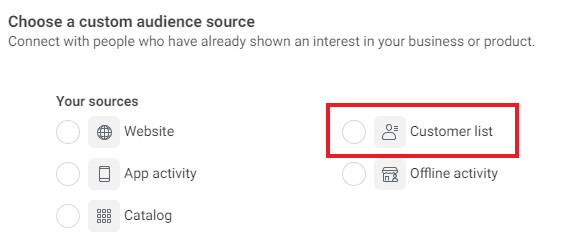
Confused concerning the distinction between remarketing and retargeting? You aren’t alone!
These phrases are used interchangeably lately. However are they the identical?
Technically, no.
In internet marketing, remarketing and retargeting have comparable targets however key variations which are necessary to know.
The largest distinction between remarketing and retargeting lies inside technique and who you’ll be able to attain.
Learn on to find how they differ and when it’s acceptable to make use of every technique.
Remarketing & Retargeting: Related, However Completely different
Promoting managers spend a whole lot of time crafting audiences, testing inventive, and obsessing over knowledge.
It may be a protracted course of, with solely a small share of advert clickers truly changing.
When you is perhaps getting a whole lot of new incoming net site visitors, you might not see these numbers translate to gross sales shortly. And few change into a sale the primary time they land in your webpage.
It’s simple to overlook the true position of selling:
To win individuals over lengthy earlier than they make the choice to decide on your product or firm over others.
Usually, one of the best individuals to focus on are those that have visited your web site greater than as soon as or have already digitally interacted with you.
Retargeting and remarketing each give the chance to achieve these clients. They’re additionally extra more likely to buy fairly than first-time guests.
This may be a particularly necessary technique in your advertising efforts.
Now let’s discover remarketing and retargeting individually in order that the variations change into clear to you.
What Is Retargeting?
Retargeting can have a number of approaches.
It most frequently refers to on-line advert placement or show advertisements focusing on customers who’ve interacted together with your web site in particular methods with out buying.
As soon as a customer enters your website, clicks on a product, or takes a sure motion that you really want them to take, a cookie is ready of their browser.
You may then use this data to “retarget” them with advertisements primarily based on their interactions as soon as they depart your web site.
These advertisements are positioned by third events, such because the Google Show Community or Fb. They permit your advertisements to set off on different websites that your guests go to.
Usually, retargeting may be categorized into two themes: “on-site” and “off-site” occasions.
Every has totally different methods you’ll be able to take relying on the form of interactions you wish to goal.
Let’s have a look at these somewhat nearer.
Focusing on “On-Web site” Interactions
That is the class typically related to retargeting. It entails focusing on people who’ve already visited your web site.
They’ve interacted together with your services and products earlier than – or they’ve taken another motion however could not have accomplished the sale.
Retargeting to those that have had on-site interactions can definitely improve conversions.
It may additionally assist retain those that have already expressed curiosity in your model however aren’t fairly able to buy but.
There are a bunch of the way to retarget potential clients.
A number of the methods you’ll be able to goal people who’ve had onsite interactions embody:
- Goal primarily based on a product that they interacted with however didn’t purchase.
- Goal primarily based on how they discovered your web site (social media, a search, or different inbound occasions).
- These in your e mail listing who’ve expressed curiosity in your model however haven’t but transformed to a sale.
These parameters may be arrange inside totally different platforms, reminiscent of:
- Google Adverts.
- Google Analytics.
- Meta (Fb) Adverts.
- And plenty of others.
Retargeting campaigns nearly at all times present higher engagement and conversions than non-retargeting campaigns do.
This goes again to the truth that it’s a lot simpler and extra environment friendly to market and promote to those that have expressed curiosity in your model or business.
Focusing on “Off-Web site” Interactions
Retargeting was fairly restricted to on-website habits.
That modified, although, as customers spent extra time on social media.
Product and model data supply was not housed in a single place.
As an alternative, it began to disseminate throughout different areas.
This meant viewers interactions now existed in a number of locations that weren’t owned by the model anymore.
Social media giants like Meta acknowledged this and began to make engagement focusing on a chance.
In different phrases, manufacturers might make retargeting pushes primarily based on what a person did on the platform because it associated to their Web page, Occasions, and different Fb-controlled objects {that a} model participates in.
Retargeting might now embody “customers who interacted together with your Web page” and different comparable choices.
In follow, focusing on these customers was nonetheless retargeting as a result of they’d not but transformed to clients.
This grew to become the courageous new world of “off-site” interplay focusing on.
Screenshot from Fb Adverts, September 2023
What Is Remarketing?
That is the place it will get somewhat complicated, and there’s some overlap within the business.
Typically retargeting is known as “remarketing” (although it truly is remarketing).
An instance of that is Google’s Remarketing Instruments – they’re all retargeting instruments within the basic sense, actually.
Whereas this can be somewhat complicated, simply keep in mind that remarketing and retargeting do share targets and that the terminology just isn’t as necessary because the related technique.
So, what’s the largest distinction?
Retargeting is about transferring not-yet clients down the acquisition path.
Remarketing is about re-engaging current clients by way of media platforms like e mail and even paid advertisements.
Ways like emailing a buyer to resume a service or upsell an adjunct are conventional examples of remarketing.
It may additionally take the type of a model “reminding” a person to behave, utilizing details about their buy historical past.
This regularly occurs in e mail advertising but additionally takes the type of paid advertisements focused towards present buyer segments.
The Blurry Line Between Remarketing & Retargeting
These two techniques used to exist in silos: e mail was its personal island, and paid media was restricted to top-of-funnel focusing on and retargeting primarily based on website actions.
Nevertheless, these two have change into considerably interchangeable lately.
Why?
Nicely, platforms like Google Adverts and Meta Adverts added the aptitude to focus on on-platform utilizing e mail buyer lists years in the past.
E-mail not exists as a separate silo of knowledge from the paid media a part of the world.
Right here is the Fb Adverts model:
 Screenshot from Fb Adverts, September 2023
Screenshot from Fb Adverts, September 2023
Right here is Google Adverts’ model:
 Screenshot from Google Adverts, September 2023
Screenshot from Google Adverts, September 2023
When an e mail listing is uploaded, the platform will then work to match these e mail addresses with person logins.
That matched listing is used to point out advertisements to (assuming it meets the minimal threshold of viewers dimension, which varies by platform).
Or, that matched listing is used to as an exclusion in campaigns, so they’re not proven advertisements, which suggests the aim continues to be targeted on new person acquisition.
So now you could have that blurry line of focusing on your e mail customers, maybe with the identical message you’re sending in emails, however doing it with a paid commercial.
Or, you’re utilizing the identical listing of e mail customers however sending them a totally different message primarily based on the way you’re utilizing these lists.
When To Use Retargeting Vs. Remarketing
Deciding when to make use of retargeting or remarketing finally comes right down to this: technique.
Incorporating each techniques into your advertising technique is a good way to incrementally improve conversions. It doesn’t need to be an “both/or” sport.
On one hand, you’d be focusing on ‘internet new’ clients by retargeting clients through paid platforms like Google or Meta Adverts.
Then again, you’d be remarketing to current clients for the possibility they change into repeat clients.
Since each strategies goal clients, the price effectivity is often larger than non-targeted advertisements.
Now, let’s check out some examples of whenever you’d use one over the opposite.
Prioritizing Retargeting As A Technique
As talked about above, retargeting is all about reaching potential clients who’ve interacted together with your model not directly.
A sound retargeting technique ought to be integrated if:
- Your important aim is gaining new clients.
- Your model has a product/service that’s usually a one-time buy.
- You’re spending an honest quantity already on paid advertisements for consciousness constructing.
Crucial one to handle is should you’re already working model consciousness campaigns – and spending cash on them.
If you happen to’re spending these hard-earned advertising {dollars} making an attempt to draw new customers, that you must do due diligence with retargeting campaigns.
Most customers received’t purchase one thing the primary time they’ve heard of a model or the product/service.
That doesn’t imply model consciousness {dollars} aren’t price it, although!
Nurturing these customers down the funnel with retargeting efforts is the place you’ll begin to see these incremental conversions are available in.
Prioritizing Remarketing As A Technique
As a fast refresher, remarketing is all about re-engaging current clients who’ve already bought out of your model.
It’s best to contemplate incorporating a remarketing technique if:
- Your model has a product/service that’s usually a repeat buy.
- You wish to upsell clients with further merchandise that will match their wants.
- You don’t have an enormous advertising finances.
Remarketing choices have come a great distance all through the years, which is nice for entrepreneurs.
Using ‘free’ channels reminiscent of e mail advertising or SMS messaging is a good way to re-engage present clients. Particularly in case your advertising finances is constrained.
It’s an opportunity to remind them that they want your product. Or, it’s a possibility to introduce them to further merchandise that they could like.
Nurturing current clients even after they’ve bought permits for long-term buyer relationships to type.
And usually, clients are actually a model’s finest advocates. And word-of-mouth advertising is one thing that’s extraordinarily underrated.
Retargeting Vs. Remarketing: The Takeaway
When evaluating retargeting and remarketing, the overlap and variations have change into much less clear over time.
However that has additionally been true for digital advertising, generally.
Their shared aim, although, is to extend conversions from these most certainly to purchase out of your model; the distinction actually being the related technique.
Retargeting is absolutely targeted on focusing on customers who’ve interacted together with your model however haven’t but bought through paid advertisements (and might take quite a lot of varieties and goal a broad vary of people).
Remarketing focuses on re-engaging current clients, primarily by way of e mail campaigns or paid advertisements, and reaching out to those that have already had interactions, permitting for extra particular upselling and messaging.
This merging of retargeting and remarketing is absolutely indicative of what we see in digital advertising as an entire:
Attribution just isn’t a clearly outlined factor.
It used to really feel prefer it was, as soon as upon a time, but it surely was largely attributable to platforms not integrating all the weather entrepreneurs had entry to.
As these platforms proceed to cross-reference each other, the questions change into much less about what defines a tactic and extra about which mix of them yields one of the best outcomes.
Extra assets:
Featured Picture: Yalcin Sonat/Shutterstock